articles
What Hindus can learn from Batra vs. Doniger
Published
11 years agoon
By
ihar
Author: Dr. Jayakumar Srinivasan
Press Release: http://centreright.in/2014/03/what-hindus-can-learn-from-batra-vs-doniger-2/#.VTHsmNzBXlY
Contents:
- Introduction
- Vilification of Hindus and Hinduism
- Doniger’s Book, The Hindu Experience and Wendy’s Children
- Psychoanalysis and its Application to Hindu Figures
- Dialog with Purported Scholars of Hinduism
- Asymmetry and Labeling in Reporting and Discourse
- Calling Out the Labelers
- “Reductio ad Hindutva”
- “Reductio ad Taliban”
- “Donigeration”
- Conclusion
Introduction
Recently, after four years of engagement, Penguin agreed to an out-of-court settlement to voluntarily withdraw and pulp all copies in India of the book The Hindus: An Alternative History. Wendy Doniger, Distinguished Professor of History of Religions in the Divinity School of University of Chicago, is the author of the book.
Wendy Doniger is not new to Hindus. Around 2002, critically acclaimed researcher, writer and speaker, Rajiv Malhotra, reported his encounters and engagements with Religions in South Asia unit of the American Academy of Religion, where he identified Doniger as “undoubtedly the most powerful person in academic Hindu studies”. He exposed the disturbing syndrome of eroticization and denigration of Hindu traditions and practices.
Many have critiqued Wendy Doniger’s book. In this article, while referring to such works, I cover deliberate vilification of Hindus and Hinduism, asymmetry in reporting and discourse, application of unproven psychoanalysis and provide much needed labels to label the labellers.
Vilification of Hindus and Hinduism Abounds
Cases of disrespecting or outright vilification of Hindu icons and traditions have increased in the last decade. In India, the venerated H. H. Jayendra Saraswati Swamigal, Acharya of a 2000+ year old Kanchi Mutt, was arrested in a callous and disrespectful manner by the Tamil Nadu Government in 2004. Hindus felt vulnerable and confused. The mainstream Indian media, which blatantly disrespects the Hindu majority, was the first to act as the jury. Just a few months ago, the sham case was dismissed and the Acharya was acquitted. However, due to the muted coverage of the acquittal, the negative perception predominates in the public. Such disrespectful treatment of religious leaders is not imaginable in the US, as demonstrated by the treatment of proven cases of pedophilia in the Catholic Church. The Indian episode is equivalent to arresting the Pope on trumped up charges.
Recently, the Tamil Nadu government made an attempt to control the iconic Chidambaram temple. The Archaeological Survey of India quietly renamed the Shankaracharya Hill in the Kashmir Valley to Takht-e-Suleiman. Just a few months ago, fatwas were issued in the sacred town of Rameswaram that bars non-Muslims from entering Muslim-majority villages! Outrages such as these are rarely covered by mainstream media and are reported only by independent Hindu watchdogs. Examples such as these are numerous.
In the US High School History textbooks, portrayals of Hindus as monkey and cow worshippers, bride burners, and given to caste-based oppression abound in what Rajiv Malhotra has termed the Caste, Cows and Curry syndrome.
Doniger’s Book, The Hindu Experience and Wendy’s Children
In page 3 of the preface of The Hindus, the Hindu encounters a shrill message: Doniger indicates that she is presenting “a narrative of religion… as linga (an emblem of Lord Shiva often representing his erect phallus) as set in a yoni (the symbol of Shiva’s consort, or female sexual organ)…”. (section in parenthesis is part of her writing). This is the forerunner of things to come in her book.
Kaalidaasa, one of the greatest poets humanity has known, dedicated his classic Abhijnaana Shaakuntalam, to Shiva and Parvati, using a metaphor that the two are as inseparable as a word and its meaning in the famously known ‘vaagarthaaviva‘. In the Hindu tradition, it is customary to begin a class, program, or a book with a dedication to the ever-present Ishwara, such as Shiva, Vishnu, Saraswati or one’s Guru. I grew up as a Hindu, listened to many erudite Swamis on the spiritual, philosophical and practical essences of Hinduism, studied some Hindu texts, practiced Vedic rituals, spent all night worshipping Shiva during Shivaraatri, taught children the tenets and practices of Hinduism, and coordinated group-study of the Bhagavad Gitaa.
The word “linga” in the religious and spiritual context means “lingyate anena” or “that which is indicated by”. The oval shape has no beginning or end, signifying Brahman, that which is the essence of the entire world, that which always was, is and always will be, that which is all pervasive and indestructible. Brahman is that which cannot be categorically pointed to as an object of our sense-perception or inference, hence Shiva is often symbolically portrayed as “teaching in silence”. We grew up chanting Lingaashtakam (eight verses on Shiva in the form of Linga) that praises Shiva as the one who is worshipped as the liberator of the sorrows of life.
The western interpretation of the Shiv Linga as a phallic symbol is not the way the Hindus look at the Linga, as also pointed out by Prof. Balagangadhara in the book Invading The Sacred. In such circumstances, whose interpretation should have primacy, the Western or that of hundreds of millions of Hindus?
The book is littered with factual inaccuracies, blatant denigration, and racism. A Chapter wise review of the book, in particular, covering over 600 occurrences of factual errors, trivializations, and eroticization, has been meticulously developed by Vishal Agarwal, and partially by Chitra Raman. As an example from the book to quote: “If the motto of Watergate was Follow the money, the motto of the history of Hinduism could well be Follow the monkey or, more often Follow the horse.”, or “Dasharatha’s son is certainly lustful… when Lakshmana learns that Rama has been exiled, he says, The king is perverse, old, and addicted to sex, driven by lust”. Hindu Deities are presented as lustful, Hindu Saints are falsely alleged to have indulged in sexual orgies, or to have ‘taken actions against Muslims’, Hindu worshippers are compared to cheating boyfriends, intoxication is a central theme of the Vedas and Hindu scriptures are presented as a litany of tales of faithful women forsaken by their ungrateful husbands.
Prof. Madan Lal Goel of University of West Florida caught Prof. Doinger red-handed: “After building a caricature, she laments that fundamentalist Hindus … are destroying the pluralistic, tolerant Hindu tradition. But, why save such a vile, violent religion …?” Given the extreme nature of the writing, the burden is on her supporters to say how they are not siding with her in inaccurate characterization and intentional denigration of Hinduism.
In the book Kali’s Child, Jeffrey Kripal, Wendy Doniger’s protege, paints Ramakrishna Paramahamsa as a pedophile and Swami Vivekananda as a homosexual. In his book Ganesa, Paul Courtright, another student of Wendy Doniger, caricatured Ganesha with a trunk that is likened to a limp phallus and as one who is attracted to his mother Parvati. Even more egregiously, Courtright claimed that the Devi Bhaagavata Puraana records an incestuous rape by Daksha of his own daughter, the Goddess Sati. Doniger and her children accomplish such feats by filtering all the richness and complexity of Hinduism through a single perspective of a Freudian psycho-analytical approach applied to the exclusion of the others. In accomplishing the feat, Doniger and Wendy’s children take generous “scholarly” liberties in extrapolating the texts that they analyze with the academic license of psychoanalysis.
Psychoanalysis and its Application to Hindu Figures
Far from burning books or issuing fatwas, Hindus have undertaken a serious study of such “scholarship”. Rajiv Malhotra’s Infinity Foundation systematically present a critique of American Studies on Hinduism, in the book Invading The Sacred. Leading players, asymmetry of power between Euro-centric Academics and its critics, debates and exchanges, and the “science” of psychoanalysis are discussed.
Hindus must become familiar with the topic of psychoanalysis because Hindus are the subject of this less-known theory. Psychoanalysis posits that human attitude and thought are largely influenced by irrational unconscious drives. Conflicts between the conscious and unconscious results in states of neurosis, anxiety, and depression. Freedom from the unconscious material is obtained by bringing that material to the conscious through guidance.
Freudian psychology is far from an established science. It is not an evidence-based science. Karl Popper, who is famous for introducing the concept of falsifiability to demarcate between science and non-science, is famously known for viewing Freudian psychoanalysis as a pseudo science. Popper said that psychoanalysis was simply non-testable, irrefutable. There was no conceivable human behaviour which would contradict it. [Karl Popper, Conjectures and Refutations, p. 37. ] Or, as my mentor told me in my first job “If the only tool you have is a hammer, every problem looks like a nail.” – so I have the solution to all problems.
In Freudian psychoanalysis, schizophrenia and depression are not brain disorders, but narcissistic disorders. Autism and other brain disorders are not brain problems but mothering problems. These illnesses do not require pharmacological or behavioral treatment. They require only “talk” therapy.
What has the application of Freudian psychoanalysis done to Hinduism?
In Invading The Sacred, Alan Roland, an ex-President of the National Psychological Association for Psychoanalysis, explains the uses and misuses of this practice where “all … interpretations remain speculative”. Applied to Indian Swamis, it has reduced spiritual experiences to regressions into infancy, homoerotic phenomena, and psychopathological or defensive motivations. Observing an essential difference in the constituted individual – The Western individualized self vs. the Indian familial-communal self – Roland questions the applicability of Freudian analysis to Indians, leave alone spiritually accomplished Swamis. Roland views “attempts to link spiritual experience with various developmental stages as all being highly reductionistic”. Scholars “do not take sufficiently into account the existential nature of spiritual experience”. I feel this is an understatement. It is like a teenager observing that research (performed by Professors in University) is motivated by a sense of lack of self-worth.
Sudhir Kakar, an expert psychologist, observes in psychoanalysis the treatment of Indian culture and Indians as “patients”, a lack of respect and objectivity for the patient, and a disdain for mysticism.
What possible benefit can be obtained by analyzing, say Newton, to conclude (hypothetically) that his intellectual pursuit was a result of intense taunting and abuse he suffered in the family as a child? On the contrary, this gets into invasion of privacy and denial of tradition and knowledge. These so called scholars are outright disingenuous in selectively applying psychoanalysis to established Hindu figures. Malhotra observes that “Freud had ruled out …applying his methods either posthumously … or via native informants … not directly engaged by the psychoanalyst.” This reveals to us the troubled minds of these ‘scholars’, rather than the minds of Shiva, Ganesha or Ramakrishna. It seems to me that it is Doniger and her cohorts who need immediate psychological help, for which we seek Bhagavan Ganesha’s help!
The Hindu tradition allows us to recognize spiritually advanced individuals, called Swamis. For Hindus, our Swamis, who are our teachers, also serve as our personal counsellors and family guides. A Hindu, however accomplished professionally, can still be a spiritual child. I am reminded of the story when a professional went to a revered Swami and introduced himself as a ‘very successful marriage counsellor’. Upon being asked what brought him there, he said “My marriage is on the rocks!”
Alan Roland shares his experiences of applying psychoanalysis practice with several individuals who took up spiritual practice. Some of them were in failed marriages and wanted to escape family distress. He helped them see their motivations which in turn enabled them to lead more useful lives. In fact, the Swamis in the ashram where I study are routinely sought out for guidance on personal emotional challenges. Within seconds, they can spot personal pain underneath a spiritual interest. Teaching and counselling go hand-in-hand. This is why the tradition holds the first contact with a Swami as a defining moment in the life of a Hindu. Any system is prone to abuse and the tradition has its in-built way of weeding out charlatans.
Roland questions whether spiritual aspirations, practices, and experiences essentialize into regression, and criticizes Doniger’s school of universalizing Freudian techniques and developing wild theories of Indian culture. Roland observes that “If anything, clinical experience indicates that spiritual practices and experiences are a strong counterpoint to regression and childhood merger experiences with the mother and with the Hindu extended family”. The authors of the book Invading the Sacred analyze the scholarship of Wendy Doniger, Jeffrey Kripal, Sarah Caldwell, and Paul Courtright and ask the troubling question of whether their own personal psychosexual traumas are projected on to other cultures. Malhotra challenged Doniger at the 2000 AAR conference if she should be psychoanalyzed, and observes that Kripal’s need to distance himself from his half Roma/Hindu lineage through his father (and become 100% white) has manifested fully in his work.
Therefore, I view the process of psychoanalysing Hindu spiritual icons and giants by ‘scholars’ under the banner of ‘Hinduism studies’ as an underhanded way to vilify Hinduism.
Dialog with Purported Scholars of Hinduism
As much as Wendy and her children take liberties with Hindu texts, they do not evince similar openness in participating in discussions of their works. It is not that Hindu intellectuals did not try to establish a dialog with Doniger. After The Hindus was published, several Hindu scholars attempted to engage with Prof. Doniger. At the Association of Asian Studies annual conference in 2011, Prof. Madan Lal Goel of University of Florida organized a panel to discuss Prof. Doniger’s book. Prof. T. R. N. Rao, Professor Emeritus at Louisiana State University and Prof. Bharat Gupt of Delhi University were other round-table panelists. Doniger was invited several times by these individuals but declined to participate. Kripal likewise has not responded to Swami Tyagananda’s response to “Kali’s Child”. Says Arvind Sharma, Birks Professor of Comparitive Religion at McGill: “Such perceived indifference to an obviously credible critic was noticed by the Hindu community, … [who] took it upon themselves to explore the matter further.” “Nor is the cause of civilized intellectual discourse advanced if they decline to respond to informed critiques simply because the critics do not happen to be academics. It tempts the critics to conclude that the emperors have no clothes.”
Prof. Jeffery Long, chairman of the department of religious studies at Elizabethtown College, has voiced concerns about the consequences of such misinformation: “How many children will grow up believing Hinduism is a ‘filthy’ religion, or that Hindus worship the devil? When they grow up, how will such children treat their Hindu co-workers and neighbors? Will they give them the respect due to a fellow citizen and human being?”
Through a series of three articles, Paul Courtright was engaged in a debate in LittleIndia.com where Paul Courtright conceded that his interpretation of incestuous rape was unwarranted: “I’m not sure I would say explicitly, ‘Daksa raped Sati. Paul Courtright then adds: “I think the storytellers are trying to tell us something by not telling us everything. The project of interpretation is to try to get at not only what is said, but what is not said. Naming these unconscious desires is, of course, the project of psychoanalysis.” Little India’s independent analysis of the two passages based on the Puranas in Courtright’s book does lead to the conclusion that one of the claims is clearly erroneous, which he acknowledges, and the second is strained at best and unsupported by any of the many other versions of the story in the Puranas. Arvind Sharma observes that a “methodologically sophisticated slander of Hinduism was fast becoming an American academic pastime.”
Richard Crasta, knows very well the enormous barriers Indian writers face in getting their original work (especially those which challenge the Western establishment) published in India. In his satirical and riveting book Impressing the Whites, The New International Slavery (2000), he explains why nothing short of connections in the British Embassy may be needed to appear in the radar of powerful publishing houses in India. On the contrary, western authors can publish with ease in brown country, especially if it is derogatory about browns! The book publishing cartel in India seems to be controlled by the Brits.

Monika Arora is the legal counsel for Batra’s Shiksha Bachao Andolan Committee (SBAC, literally, Committee of the Movement for the Protection of Education). As for worries that this spoke poorly of India’s commitment to the freedom of expression, Monika Arora counters it with the argument that “freedom of expression does not mean freedom of defamation”. Many legal jurisdictions (including in the US) have adopted the substantial-truth doctrine which allows for restricting freedom of expression from overstepping onto defamation grounds. “Doniger has a history of defaming Hindus,” says Arora, “and the book is filled with factual errors but just because she is white, we don’t question these things.”
Asymmetry and Labeling in Reporting and Discourse
When reporting episodes concerning Christianity, journalists adopt a very professional and respectful tone. Consider the book Da Vinci Code, a mystery novel by Dan Brown published in 2003, tracing an alternative history of Christianity, a book that, as expected, received enormous attention. Hundreds of Christian organizations ranging from small outfits to CBN have responded angrily. A quick Internet search of reports of such criticisms shows the following language:
- “The book has been extensively denounced by many Christian denominations as an attack on the Roman Catholic Church.”
- “…mostly negative reviews from Catholic and other Christian communities.”
- “Critics accuse Brown of distorting and fabricating history.”
- “A Biblical Response was provided by …”
- “…presentation of religious ideas that some Christians regard as offensive”
- “Christian groups in many Asian nations have stepped up their protests …”
- “A Christian perspective…”
Notice how respectfully Christians are referred to in reports. None referred to upset Christians protesters as “fundamentalists”, “neo-Nazis” or “right-wing”ers. Those protesting Doniger’s book however attract a different kind of reporting.
The Time Magazine labels Dinanath Batra as a Hindu activist that has “arm-twisted” Doniger. In the article Hindu fundamentalists vs. Hinduism, USA Today introduces SBAC as a “Hindu Fundamentalist group”. Dinanatha Batra is an “upper caste man“. Dean Nelson of The Telegraph
reporting from Delhi stands to lose nothing by saying that “the book angered fundamentalists” and “fundamentalists have criticised the book”. He neither has the burden of reading the book, nor knowing anything about Hinduism, nor of India’s history. As a rule, these reports make not a single mention of how Doniger portrays Hinduism.
Calling Out the Labelers
Hindus must learn to identify when they are being labeled and call it out.
Reductio ad Hindutva
The moniker “Reductio ad Hitlerum”, was coined by Leo Strauss of University of Chicago, a predecessor of Doniger, to describe the following fallacy: If you do or like something that Hitler did, then you are also like Hitler. For example, if you are devoted to your nation, since Hitler was a nationalist, then you are like Hitler.
Wendy Doniger, in her response to the settlement, praises Penguin for taking on this book “knowing that it would stir anger in Hindutva ranks”. Notice how Doniger uses the by now familiar word “Hindutva”, a fashionable ammunition to invoke the threat of fundamentalism. She does what she knows always works well, i.e. scare Hindus into submission and then invoke fake victim hood. The truth is that her book stirs anger in all Hindus, not a special section of Hindus. Essentializing all Hindu voices as fundamentalist political views is a tactic that has been used to discourage Hindu identity or voice.
This type of labeling Hindus, who speak up to express their anguish and indignity when Hinduism is denigrated, as fundamentalists should be described as Reductio ad Hindutva – a logical fallacy of undermining an argument by association. The implication is the following: If you do anything that a Hindu fundamentalist would do (such as get angry, as Dean Nelson of The Teleghraph reports), then you are a Hindu fundamentalist. Among other things, since Hindu fundamentalists would come in support of Hinduism, any effort to support Hinduism is a sign of fundamentalism. The only way you could stop Doniger from slapping you with the charge of fundamentalism is if you stop standing up for Hinduism.
Ironically, the word Hindutva is a beautiful word that means ‘the essence of what a Hindu is’. In the Sanskrit language, the suffix ‘-tvam’ is equivalent to the suffix ‘-ness’ in English – used to indicate the attribute or nature of an object. For example, ‘kaṭutvam’ refers to the nature of being pungent, strong-scented or bitter, i.e. ‘bitterness’. ‘Samatvam’ indicates equanimity (‘sameness’) and ‘manushyatvam’ refers to the nature of being a ‘manushya’, human. Thus, Hindutvam means the nature of being a Hindu or that which makes a person or a thing Hindu. By definition, all Hindus have Hindutvam – just as Christians have Christness and Muslims have Islamness.
Anti-Hindu “scholars”, “journalists” and media have hijacked the traditional word “Hindutva” and ascribed the pejorative meaning of “Hindu nationalism” and associated with religious identity politics. Any effort on the part of Hindus to take a stand to show solidarity is labeled “saffronization”. Are Hindus not allowed any solidarity or group identity, to speak for their collective rights?
Hindus cannot seek comfort in thinking that they are not being compared to the likes of Hitler. New York Times recently called them “Taliban-like” forces.
Reductio ad Taliban
The New York Times, known for its penchant for India-bashing, Hindu-baiting and Modi-bashing (see my recent article), as expected, covered this episode. Notice how Ellen Barry once again resorts to quoting nobodies. She quotes “one writer” (whom she doesn’t name) referring to Dinanath Batra’s organization as “an unknown Hindu fanatic outfit” and given to “Taliban-like forces“. The word Taliban readily conjures vivid mental images of flying airplanes into skyscrapers, shooting blindfolded citizens, lashing men and women publicly, and chopping off the hands of innocent men. Why would a journalist of the New York Times find it right to use such threatening labels to describe a Hindu who voices a concern peacefully, using constitutionally-enabled legal means, and within the provisions of law? What burden does the non-Hindu
American journalist, serving as Moscow Bureau Chief writing about Hindus of India, have? She cleverly uses a picture of Batra alongside RSS stalwarts – enough to send deracinated Indians into a tailspin.

Dinanath Batra and his group had meticulously prepared their case after studying Doniger’s book thoroughly. They did not burn buses, loot shops, issue threats or a fatwa against Wendy Doniger. Their use of English may not be as sophisticated as that of Arundhati Roy‘s, but they followed the law for four years after which Penguin decided to voluntarily withdraw. Sandeep Balakrishna explains why this is not a free speech issue and Aravindan Neelakantan traces intellectualism and openness in historical Hindu responses to opposing worldviews and threats to Hinduism.
A few months ago, the store chain Costco apologized for labeling The Bible as “Fiction”. The media didn’t brand the protesting people as Christian Fundamentalists, just Christians. There was no media-led hue and cry about suppression of Freedom of Speech. Fourteen years ago, many will recall Doniger stating in a public lecture in 2000 that the “Bhagavad Gita is a dishonest Book”. When Hindus demanded an apology, they were promptly labeled as fundamentalists!
Prof. Doniger knows full well that Hindus followed the law by the book. So she blames Indian law. Immediately after her statement, Indian Sepoys – like faithful followers of the colonial masters – joined in the thousands to sign petitions to reform the Indian Constitution. I am reminded of General Dyer and tragedy of Jallianwala Bagh of 1919. One wonders where these free speech pontificators were when Harvard University chose to terminate the honorary professorship of Dr. Subramanian Swamy for his forthright talk on wiping out Islamic Terrorism. Or when the majority-discriminatory Communal Violence (Prevention) Bill was introduced by the Indian Parliament. On the contrary, the Catholic Church in Mumbai filed blasphemy charges under the same section 295A against Sanal Edamaruku, who attributed the miraculous water dripping at the crucifix to a leaking drainage. (He has since fled to Finland to escape a life sentence.) Let us see if these self-styled liberals offer a whimper of a protest to the recent news that google was asked to pull out a youtube video of an allegedly anti-Islam movie “Innocence of Muslims”.


“Donigeration”
The Hindu is indeed tired of being attacked within and outside her homeland but yet has no penchant for a Homeland security bill or a Patriot act. Would Prof Doniger joke at Chicago Airport that she has a bomb and test her first amendment rights? Would she write a History text about the violence, slavery, plunder, and rape of conquered women that the Holy Bible alludes to and be awarded academic Honors in the West or Israel? Has the US demanded action against Churches for Pedophilia and Money Laundering, and arrested Cardinals and Popes, and why is there no publicity of these criminal acts?

Only in India do we find that blatant denigration of Hindu deities by M. F. Hussain through his paintings or by Doniger’s writings gets applauded as an expressions of free speech. Lascivious depictions of Jesus in the US would never be condoned. The muted reaction to the fatwa against the Danish cartoonist for just one objectionable cartoon of Prophet Mohammad shows the blind-spots of all free-speech advocates.
In the 1940’s and 1950’s in the US when Communism was seen as a threat, John McCarthy’s speeches on alleged communist infiltration lead to a witch-hunt of anybody who was not anti-communist. Even though McCarthy was proved wrong and censured, it marked one of the most repressive times in American Politics of the 1900’s. The term ‘McCarthyism’ was born. I feel the need for another new term in the English Lexicon:
don·i·ger·ate
Transitive verb \ˈdo-ni-ˌgər-āt\ don·i·ger·ated, don·i·ger·ating
1 : to attack the religious sanctity of : denigrate <donigerate Hindu deities>
2 : to make a denigrating interpretation of anything held sacred: <donigerate modes of worship>
3 : to defame in the cloak of scholarship; to use the academic pulpit to denigrate a native tradition
4 : to make an institution out of victimizing ancient traditions
5 : to invoke fake victim-hood when criticized.
Conclusion
Hindus do not need a lecture on free speech, rather we need to speak freely. It is alright to get upset when Hinduism is defamed. It is alright to protest peacefully, contest and file lawsuits, and write – none of which makes fundamentalists of Hindus. The West has not figured out a way to accept ancient traditions that consider the world or nature as sacred, whose spiritual vision dissolves perceived differences between the individual, the world and God. It requires a paradigm-shift to appreciate that it is possible to sublimate one’s passions without suppressing them. America should focus on its past and address the guilt born of decimating the Native Indian traditions before obsessing over and developing crackpot theories of cultures they understand very little about. The western penchant to exoticize, sensualize and debase such traditions in the cloak of free speech or scholarship is a disease that will likely continue for a while. Utilizing their Indian Sepoys, entrenched establishments will threaten Hindus with words like fanatics, fundamentalists, right-wingers, fascists, Hindutva, saffron brigade. Hindus will learn not to take such sham threats seriously and in turn label the labellers.
Islam and Christianity have powerful hierarchical institutions that are also politically active. Unlike them, while Hindus have institutions called Mathas and Pithas some of which are millennia-old, none of them expected such vicious treatment and are not geared even for institutional protests, leave alone exercising political clout. The Acharya Sabha, the Apex body for Hindus, was formed precisely for giving Hindus a voice, but it is very much in its infancy. Until then, it is individuals and organizations that take up the cause for Hindus. Hence, Hindus should be proud of Dinanath Batra, SBAC and Monika Arora.
It is no wonder that Hindus are fighting back. Four years ago, Doniger’s book was shortlisted for an award by the National Book Critics Club in 2010. After dozens of intelligent letters like the following from Subroto Gangopadhyay and thousands of petition signatures, the award was blocked. These represent a refreshing rise in crisp scholarship by Hindus who challenge Western Universalism.
Such Hindu responses shouldn’t surprise Doniger. After all, Hindus are studying the Bhagavad Gita more than ever before. Was it not Prof. Doniger who said that “The Bhagavad Gita is not as nice a book as some Americans think… Throughout the Mahabharata … Krishna goads human beings into all sorts of murderous and self-destructive behaviors such as war?”
Shubham Bhooyaat
You may like
articles
CARVING CONTINUITIES: THE LIVING HERITAGE OF SOAPSTONE ARTISANS
Published
2 weeks agoon
November 5, 2025By
Suprabho Roy
Soapstone carving is a remarkable craft whose origins stretch back to some of the earliest civilizations in India. Today, this artistic tradition continues among communities whose heritage and skills have been passed down for many generations.
Historical Roots
Soapstone, a metamorphic rock primarily composed of talc, has been used in the Indian subcontinent since the days of the Indus-Saraswati Civilization and the Chalcolithic period. Its historical significance is evident in ancient sites where artifacts such as seals, beads, statues, and small figurines have been found. Key archaeological discoveries, like steatite ringstones from the Shunga-Maurya period and sculptures from the Gupta era, illustrate soapstone’s profound role throughout history. The artistry of temple construction, as seen in Khajuraho, Jabalpur, and Udaipur, is just one facet of the stone’s legacy, with temple artisans employing techniques and tools that are still in use by contemporary soapstone carvers.
Community and Continuity
Carving skills within artisan communities—particularly the Silawat and Vishwakarma—are shared orally and inherited over generations, often spanning four to five generations. Despite the richness of these traditions, written documentation remains scattered and incomplete, making oral testimonies vital in preserving the craft’s continuity. Migration patterns have also contributed to the dispersion and evolution of carving techniques among artisans.
Diversity of Soapstone Craft
The types of sculptures crafted by soapstone artisans are diverse, shaped by regional demands and socio-economic conditions. These range from modern decorative pieces to ritualistic art:
– In Jabalpur (Madhya Pradesh), artisans produce devotional and decorative items such as cookware, toys, and showpieces, with motifs including Shivlings, demigods, elephants, and birds. Soapstone for these works is typically sourced from mines near Bhedaghat.
– The Jhabua-Alirajpur region is known for traditional Gaata sculptures crafted in a relief style, often created in memory of deceased males and worshipped with offerings. Local mines, as well as sources in Gujarat and Rajasthan, supply the necessary soapstone.
– Udaipur’s artisans have adapted to high tourist demand, blending traditional motifs with contemporary designs. Lord Ganesh idols, abstract human figures, and various souvenirs showcase the community’s ability to innovate while maintaining cultural resonance.
Methods and Techniques
Soapstone carving is a collaborative and systematic process :
– Artisans begin with the selection and cutting of raw soapstone using cutters.
– Shaping is performed with hammers and chisels to form the sculpture’s basic structure.
– Fine chisels refine features, while detailing is achieved with pointed tools for intricate patterns.
– Female artisans often smoothen the finished sculptures using sandpaper and water, ensuring a flawless texture.
– Final touches, such as polishing and coloring, are applied with waterproof primers, oil-based substances, or spray paints for gloss and durability.
Cultural Significance and Challenges
The living heritage of soapstone carving continues to hold deep cultural value, maintaining links between the artisans of central and western India since the Bronze Age. Knowledge is primarily transmitted orally, but today faces threats from the rise of mechanization and waning interest among younger generations. Seasonal changes in tourism and market access impact sales, though affordable raw material provides some relief.
The Way Forward
There is an urgent need to recognize, support, and safeguard soapstone artisans to preserve this craft for future generations. Without such efforts, a vital aspect of India’s creative and spiritual history risks fading away. By understanding and promoting the work of these artisans, society can ensure the survival of this unique and profound tradition.
articles
CONSTRUCTING GENDER IDENTITIES IN DEATH : RETHINKING MORTUARY ARCHAEOLOGY THROUGH THE EVIDENCE OF SINAULI
Published
3 weeks agoon
October 30, 2025By
Suprabho Roy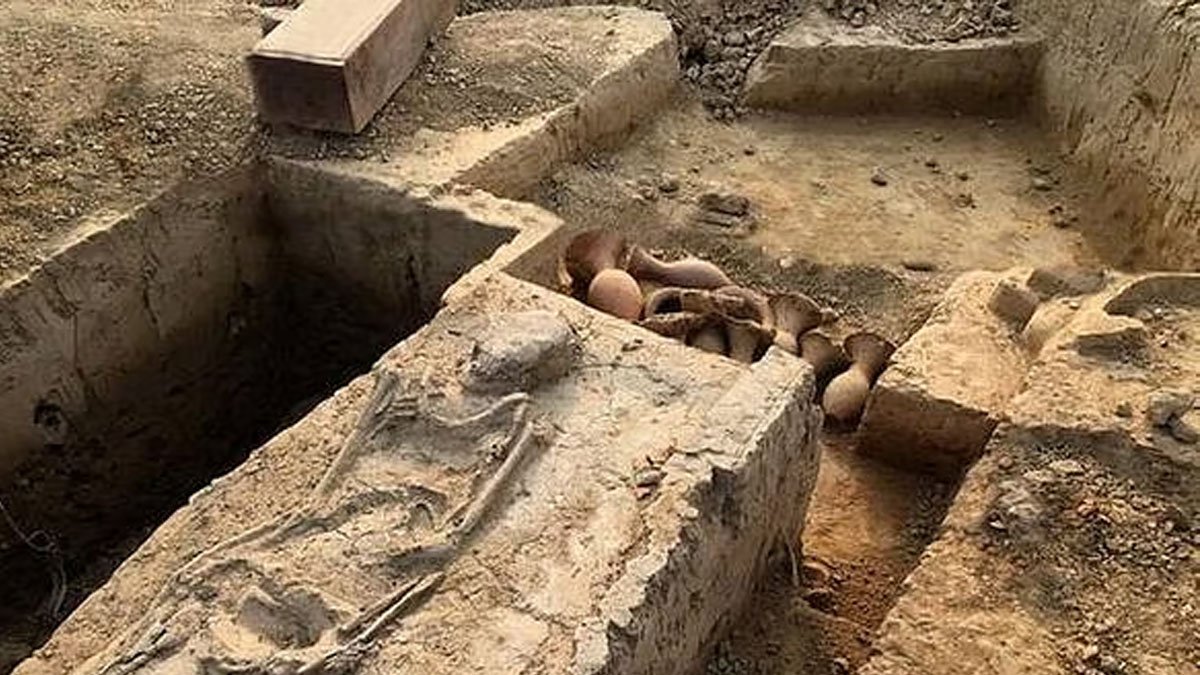
The archaeological site at Sinauli in Uttar Pradesh has provided significant insight into ancient burial practices, gender identities, and social hierarchy in South Asia. The evidence uncovered at Sinauli challenges long-held assumptions and offers fresh perspectives on mortality, gender roles, and elite status in ancient Indian society.
Location and Historical Context
Sinauli is situated in the Baghpat district of western Uttar Pradesh, lying within the fertile Upper Ganga-Yamuna Doab region. It is associated with the Ochre Coloured Pottery (OCP) culture, which dates back to the early second millennium BCE. This site gained attention due to its unique burial practices, especially those involving women and the material assemblages found with their graves.
Overview of Excavations
The Sinauli excavations were initiated in 2005 under archaeologist D.V. Sharma, and further work was conducted in 2018 by Dr. Sanjay Manjul. In 2005, archaeologists uncovered 116 burials, typically oriented north-south, along with ochre-colored pottery. The 2018 excavations revealed even greater complexity, including wooden coffins adorned with copper sheets, rectangular boxes, antenna swords, helmets, shields, pots, and controversial wheeled vehicles—leading to a debate over whether these were chariots or carts.
Types of Burials
Sinauli yielded four primary burial types:
– Symbolic burials without skeletons.
– Primary burials with full skeletons.
– Secondary or fragmented burials.
– Multiple burials containing fragmented remains.
Gender Distinctions in Burial Practices
A significant contribution of Sinauli is its challenge to conventional views on gender and mortuary archaeology. Certain burials, notably those identified by Asko Parpola, show that elite women were sometimes interred in richly decorated coffins with martial symbols such as swords, shields, and wheeled vehicles. Coffins for women featured steatite inlay and were often covered, in contrast to men’s coffins, which generally had copper sheathing and were left uncovered. Such differentiation suggests elaborate symbolism surrounding gender and possibly ritual seclusion or heightened sacredness for women in death.
One highly debated aspect is the absence of feet in Burial-1, which might suggest less earthly mobility or represent a transformation from earthly to transcendent status.
Rethinking Weaponry and Gender
The presence of weapons, such as copper antenna swords and shields, in women’s graves at Sinauli has prompted scholars to reconsider rigid notions of gender roles. These martial objects could signal the dead’s authority—either as warriors or ritual leaders—thus broadening our understanding of gender within ancient funerary contexts. Interestingly, such elaborate martial symbolism is less prevalent in the male burials at Sinauli.
Symbolism of Coffins and Elite Status
Coffins at Sinauli, rare in South Asian archaeology, were more than mere containers; they symbolically transformed the deceased into sacred beings. Their intricate decoration reflects considerable labor, resources, and craftsmanship, indicating elite status and the possibility of gendered authority within the social hierarchy.
Conclusions and Implications
The burial evidence from Sinauli emphasizes material distinctions that reveal social stratification, hierarchy, and constructed gender roles. While the idea of women warriors remains debated, the presence of martial symbols with elite women points towards complex rituals and conceptions of social power in death. Sinauli thus stands out as a crucial site for rethinking gender identities, social class, and the symbolic aspects of funerary practices in ancient India.
articles
Rediscovering Sutanuti: IHAR WB CHAPTER’S Second Heritage Walk
Published
3 weeks agoon
October 29, 2025By
Suprabho Roy
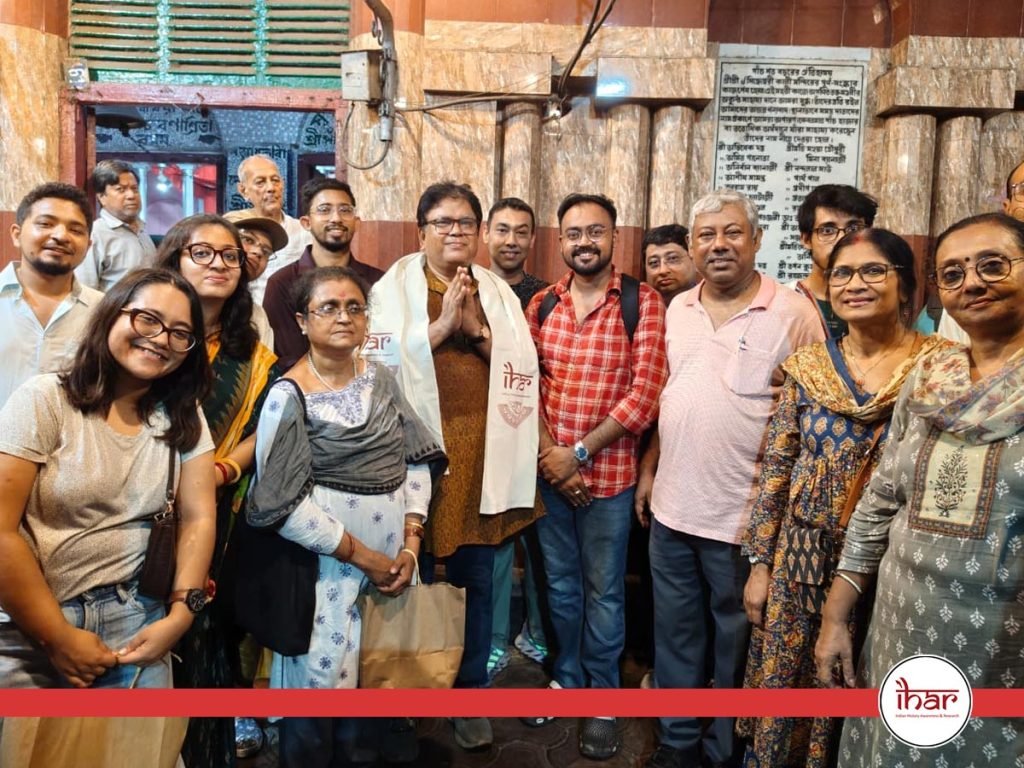
On Sunday, October 26, 2025, the organization Indian History Awareness and Research (IHAR) embarked on its inaugural heritage walk, titled “Rediscovering Sutanuti.”
Dedicated to the study, research, preservation, and public awareness of Indian history, IHAR has long aimed to connect people with the layers of India’s historical and cultural legacy. This heritage walk marked a significant step in that direction.
Why Sutanuti?
The choice of Sutanuti as the focus of IHAR’s first heritage walk was profoundly symbolic.
It was here, on August 24, 1690, that Job Charnock, an officer of the East India Company, is believed to have landed—a moment that would reshape the destiny of Bengal and, indeed, the entire Indian subcontinent.
Although the Company had visited Sutanuti earlier, it was this arrival that initiated a chain of events culminating in nearly two centuries of colonial rule, lasting until August 14, 1947.
On November 10, 1698, the East India Company entered into an agreement with the Sabarna Roy Chowdhury family, acquiring the zamindari (lease rights) of three villages—Kalikata, Govindpur, and Sutanuti—for an annual rent of ₹1300.
This agreement laid the foundation for the rise of Calcutta, though Charnock himself never witnessed it, having passed away in 1693.
Over 335 years later, the Sutanuti of 1690 and that of 2025 appear worlds apart.
Historians still debate the precise locations of Sutanuti Ghat, where Charnock’s ship is believed to have anchored, and Sutanuti Haat, the bustling market once held twice a week for the sale of cotton yarns and threads.
It was this very market that enriched the Seths and Basaks, the early inhabitants of Calcutta, through the textile trade.
Though no physical trace of that port or market survives today, scholars generally agree that Sobhabazar corresponds to the original Sutanuti region.
Accordingly, IHAR chose this locality for its first heritage walk—a symbolic return to the city’s historical roots.
The legacy of Sutanuti lives on in names like Haatkhola (“the open market”), a term derived from the old marketplace and still preserved in local designations such as Haatkhola Post Office.
Similarly, through the efforts of Sutanuti Parishad, the Sobhabazar Metro Station was officially renamed “Sobhabazar Sutanuti.”
Even in the absence of the old market, these surviving names echo the deep emotional and cultural resonance Sutanuti continues to hold for the people of Calcutta and Bengal.
⸻
Highlights of the Walk
The heritage walk took participants on a journey through Sutanuti’s remaining landmarks and forgotten corners, each revealing a fragment of Calcutta’s layered past.
B. K. Pal’s House
The first stop was the residence of B. K. Pal, the pioneering Bengali manufacturer and seller of medicines in the 19th century.
His most celebrated creation, Edward Tonic (1887), became a household remedy for fevers and stomach ailments—common and often fatal in colonial Calcutta—earning him a lasting place in Bengal’s medical history.
Shwet Kali Temple
Participants then visited the Shwet Kali Temple on Sobhabazar Street, nearly 300 years old and among the three oldest white Kali temples in Bengal.
Originally a shrine for dacoits, it later became a site of domestic worship. The deity here is distinctive—white in color, two-armed, tongue inside the mouth, and standing over Virupaksha and Kalbhairav, without the usual garland of severed heads.
Raja Janakinath Ray’s Mansion
The walk next stopped at the grand mansion of Raja Janakinath Ray of the Bhagyakul Ray family, prosperous traders from Dhaka and Calcutta.
Built in the 19th century, a part of this palatial building now serves as the Jorabagan Traffic Guard office, while descendants of the Ray family still occupy another section.
Chitpur Road (Rabindra Sarani)
Participants then walked along Chitpur Road, now Rabindra Sarani, regarded as Calcutta’s oldest road, dating back nearly 500 years.
Originally extending from Chitpur to Kalighat and later to Halisahar, the path once cut through dense forests inhabited by wild animals and robbers—an incredible contrast to today’s bustling thoroughfare.
Rameshwar Shiva Temple
Next came the Rameshwar Shiva Temple, built around 1700 by Nandaram Sen, the first native tax collector under the British official Mr. Sheldon.
Standing 80 feet tall, the temple mirrors the Aatchala style of the Kalighat Kali Temple and houses a six-foot-high Shivalinga.
Kumartuli and the Artisans
The walk then entered Kumartuli, where artisans were crafting Jagaddhatri idols.
Participants met Amit Ranjan Karmakar, a rare collector and restorer of vintage radios, tape recorders, and gramophones—all maintained in working order.
Radhagobinda and Baneshwar Shiva Temples
The Radhagobinda Temple and the Aatchala Baneshwar Shiva Temple, built by Bonomali Sarkar, another British-era official, were the next stops.
While the Radhagobinda Temple remains in fair condition, the Baneshwar Shiva Temple lies in neglect, its once-fine terracotta work fading amid weeds.
Kaviraj Gangaprasad Sen’s House
The group then visited the home of Kaviraj Gangaprasad Sen, the eminent 19th-century Ayurvedic physician who migrated from Bikrampur (Dhaka) in 1840.
Revered for his skill, he once treated Sri Ramakrishna Paramahansa and famously predicted that the saint’s illness was incurable—a prophecy now part of Bengal’s spiritual lore.
Dhakeshwari Temple
The Dhakeshwari Temple in Kumartuli houses a 800–1000-year-old ashtadhatu idol, originally enshrined in Dhaka by King Ballal Sen.
After Partition, the idol was smuggled to Calcutta in 1948 and relocated to its present temple in 1950, where it continues to be worshipped.
Madanmohan Temple
The majestic Madanmohan Temple, established in 1761 by Gokul Chandra Mitra, came next.
Once spread across 56 bighas, the temple houses a black stone deity associated with a legend involving King Chaitanya Singh of Mallabhum.
Its Raas and Annakut festivals are still celebrated annually.
Siddheshwari Mata Temple and the Black Pagoda
The final stop was the Siddheshwari Mata Temple in Baghbazar, believed to be over 500 years old.
Founded by a monk named Kalibor, it later came under the worship of the Chakraborty family and their descendants.
The goddess, affectionately known as “The Ginni Maa of Baghbazar,” was revered even by Girish Ghosh and Sri Ramakrishna, the latter once offering tender coconuts for the recovery of Keshab Chandra Sen.
Across the street stands the Black Pagoda, constructed between 1725 and 1730 by Govinda Ram Mitra, the second native revenue collector after Nandaram Sen.
Standing originally over 165 feet tall, it once surpassed even the Ochterlony Monument (Sahid Minar) in height before being partially destroyed in the cyclone of 1737.
Its surviving fragments still whisper tales of Sutanuti’s lost grandeur.
⸻
A Journey Through Memory
Thus concluded IHAR’s first heritage walk—a journey through the forgotten heart of Sutanuti, where every lane, temple, and crumbling mansion still bears the faint echo of Calcutta’s beginnings.
Though time has erased much of the physical landscape, the spirit of Sutanuti endures—in its names, in its memories, and in the hearts of those determined to rediscover it.
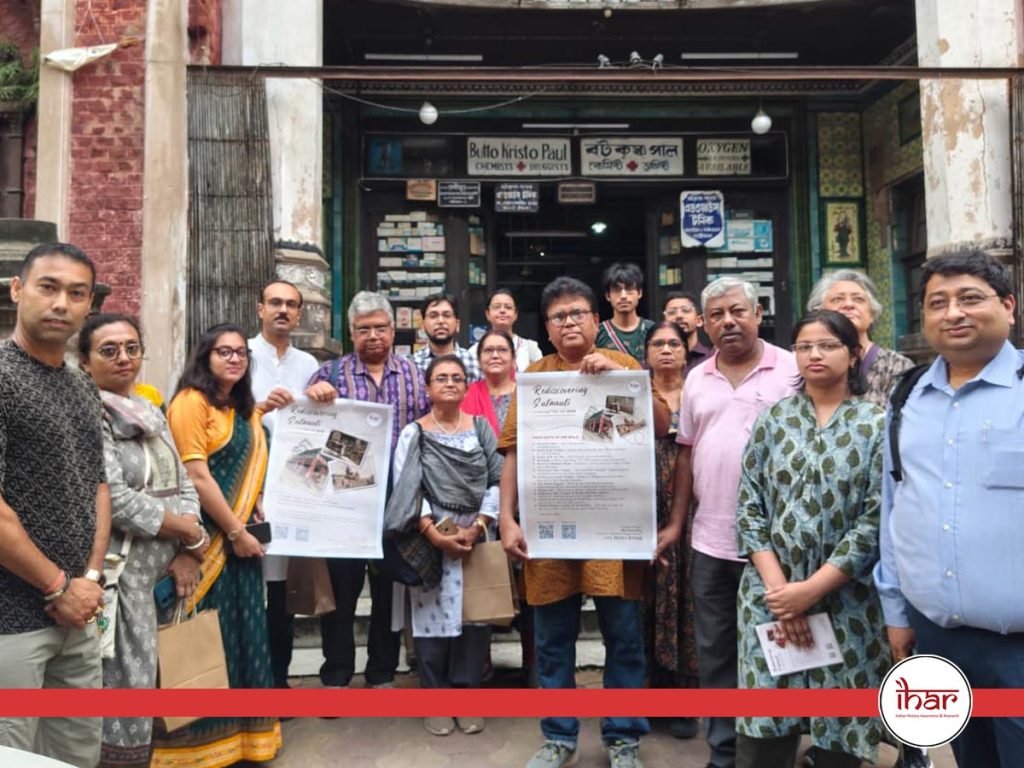
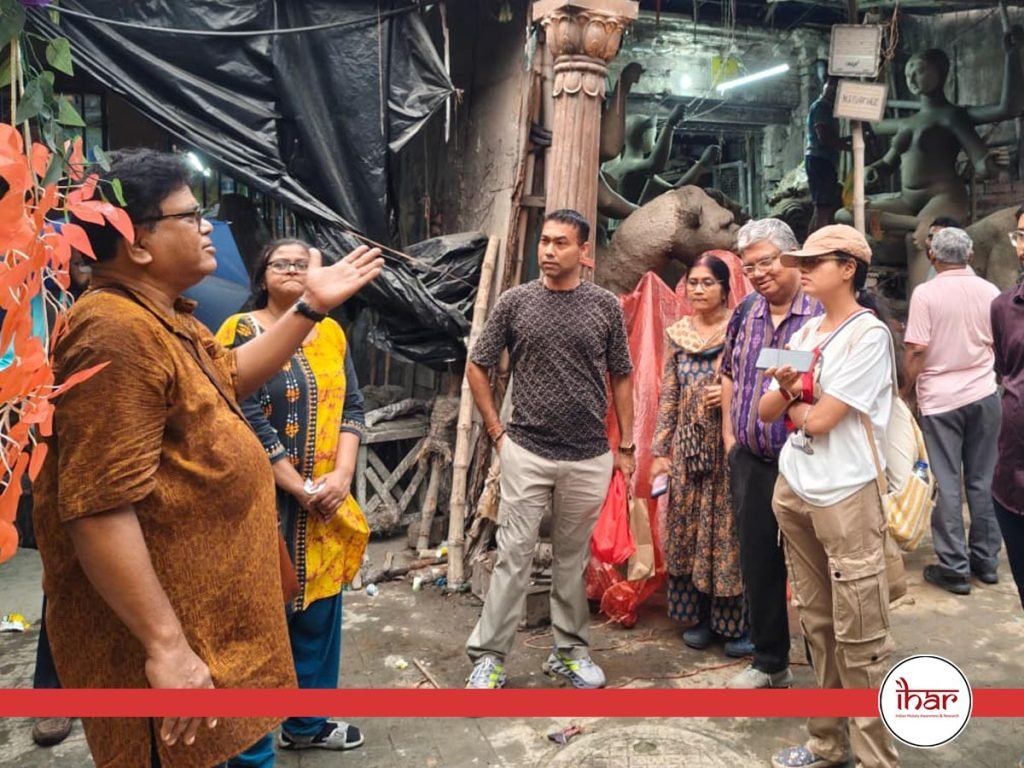

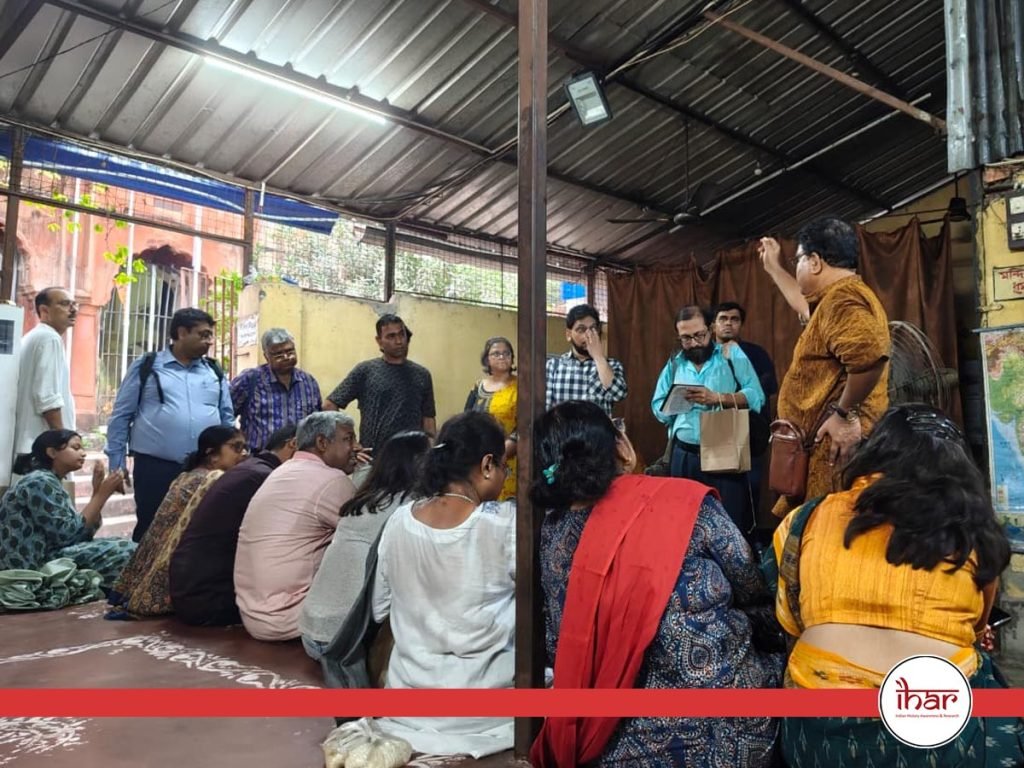
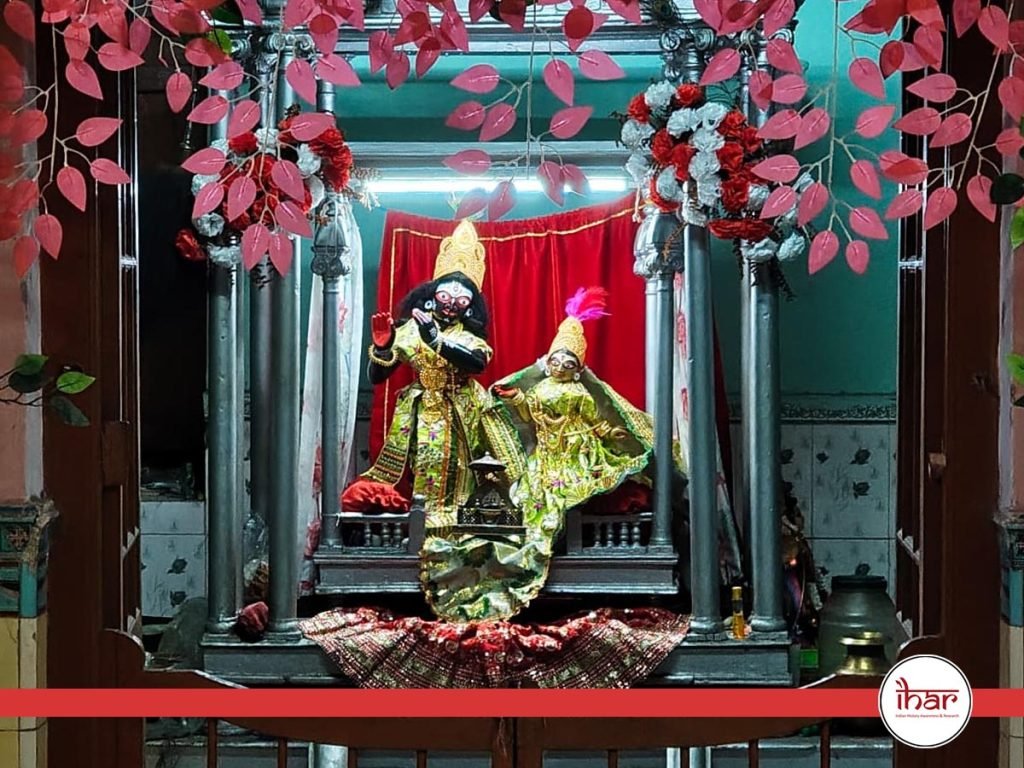
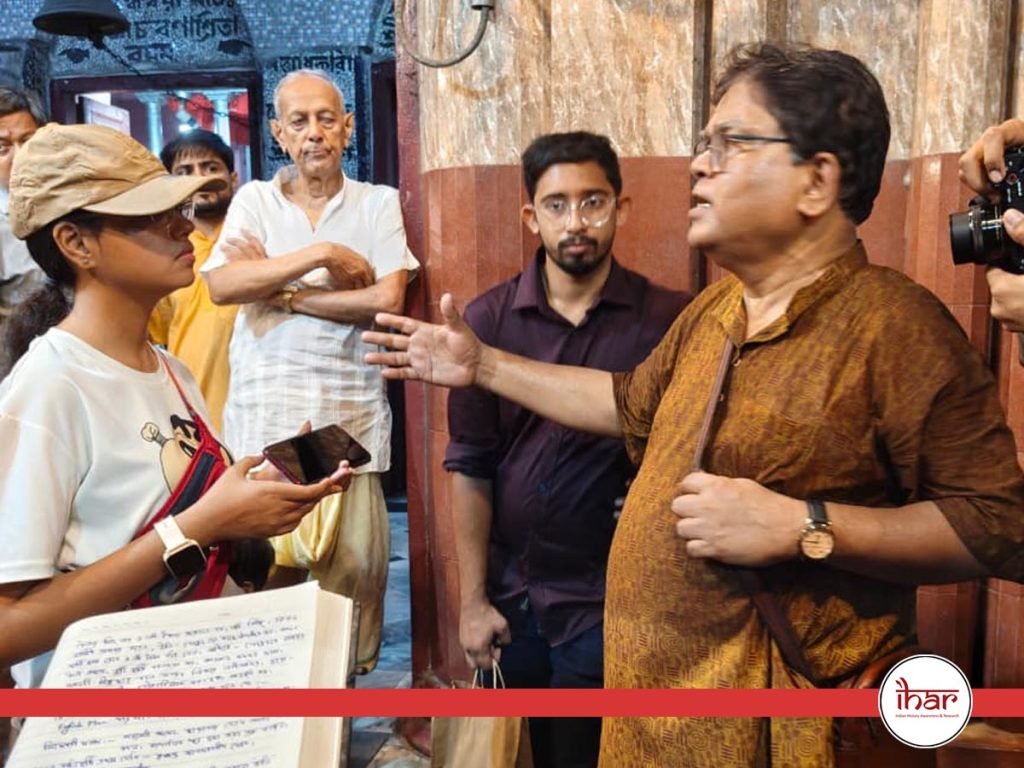

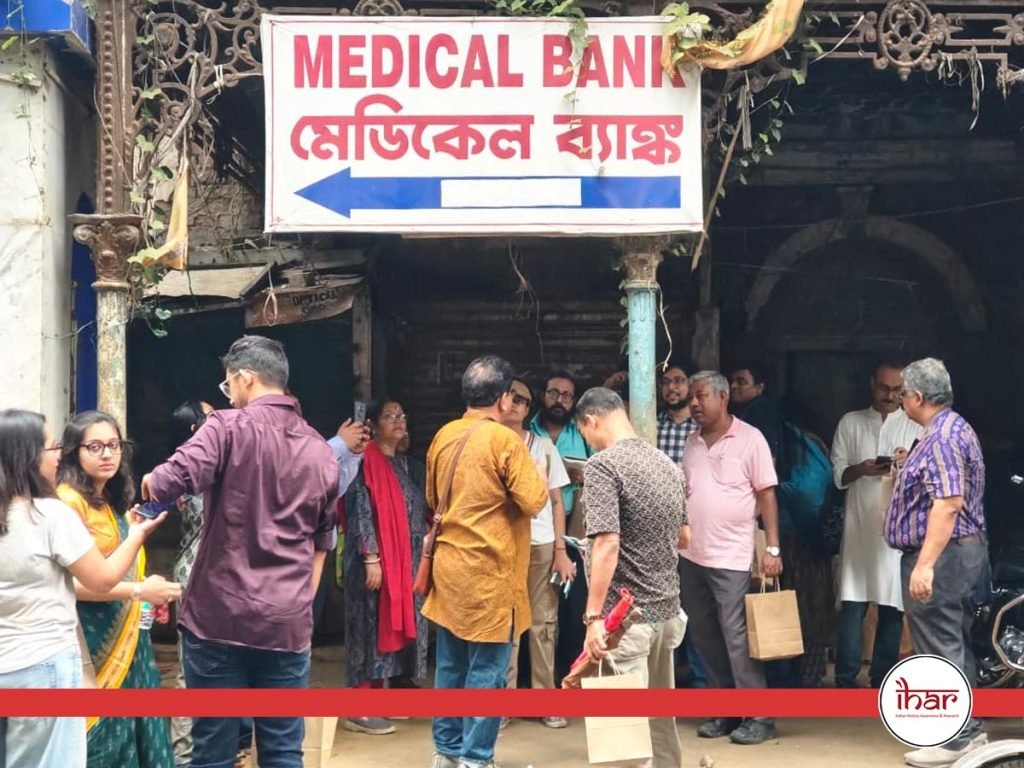


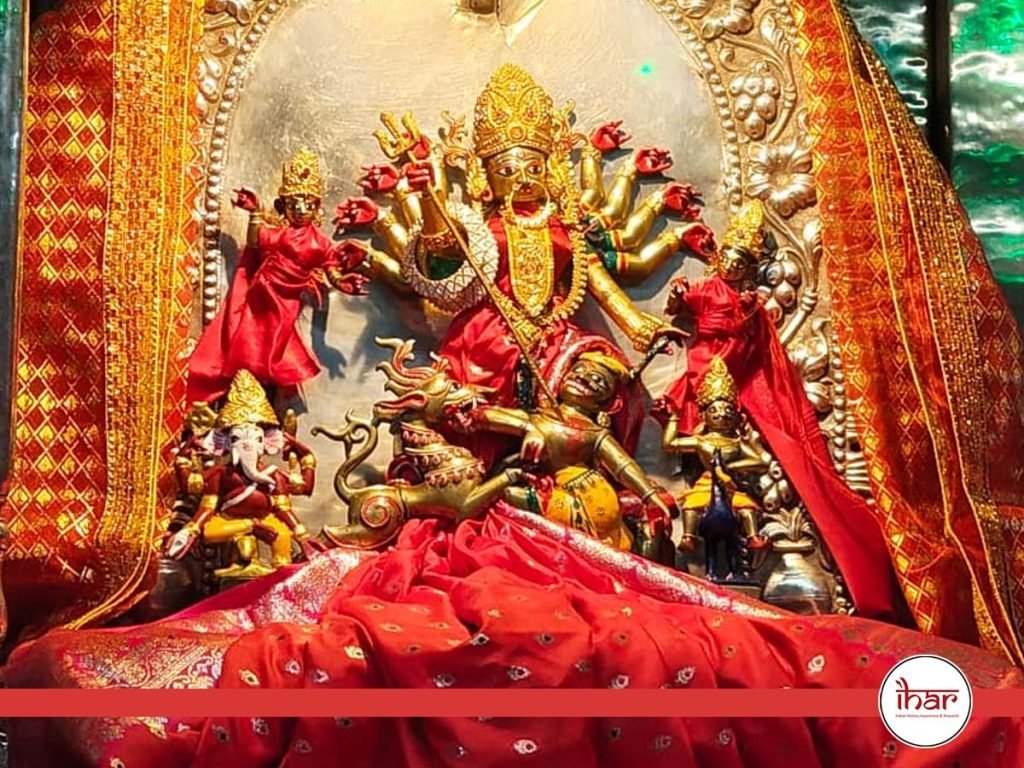
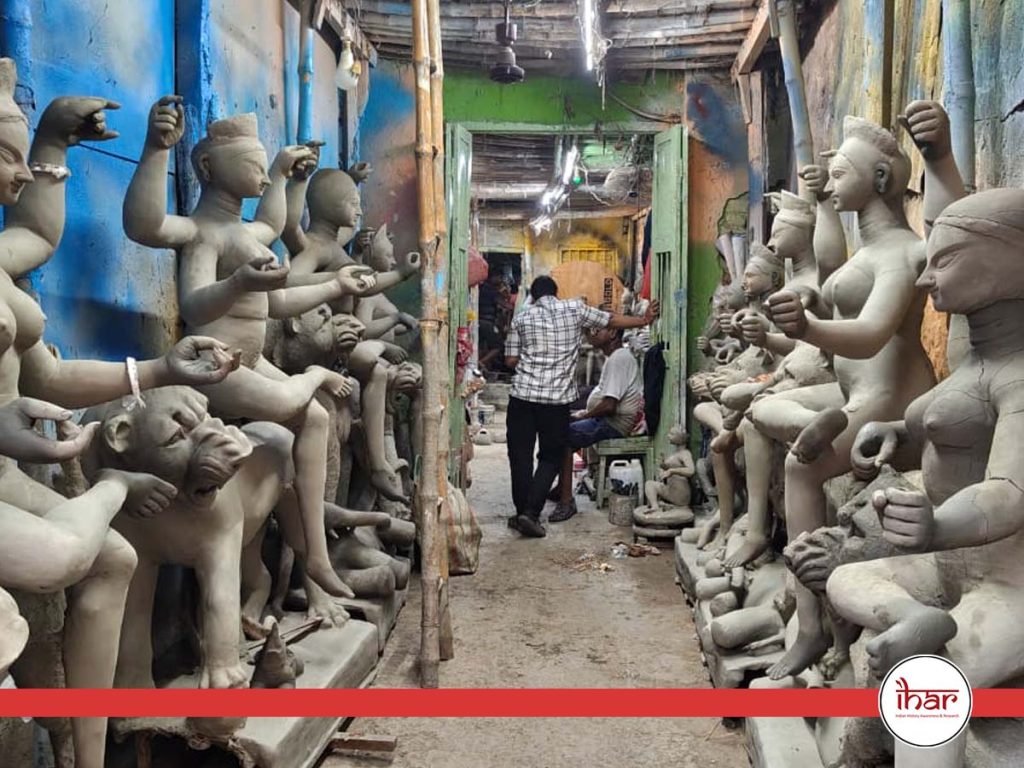


CARVING CONTINUITIES: THE LIVING HERITAGE OF SOAPSTONE ARTISANS

CONSTRUCTING GENDER IDENTITIES IN DEATH : RETHINKING MORTUARY ARCHAEOLOGY THROUGH THE EVIDENCE OF SINAULI

Rediscovering Sutanuti: IHAR WB CHAPTER’S Second Heritage Walk

Preserving Bengal’s Intellectual Legacy: IHAR West Bengal Chapter Undertakes Detailed Survey of Uttarpara Joykrishna Mukherjee Public Library

Reviving Bengal’s Intellectual Heritage: IHAR West Bengal Chapter Undertakes Detailed Survey of Chaitanya Library in Kolkata

Bharat Varsh – A Cradle of Civilzation – Panel Discussion

Bringing our Gods back home – A Conversation with Shri Vijay Kumar

Panel Discussion on Sati

Bengal’s Glorious and Diverse Heritage- Traditions and Festivals – Panel Discussion

IHAR – World Heritage Day – April 18th 2025 updates

Debugging the wrong historical narratives – Vedveery Arya – Exclusive podcast

The Untold History Of Ancient India – A Scientific Narration

Some new evidence in Veda Shakhas about their Epoch by Shri Mrugendra Vinod ji

West Bengal’s textbooks must reflect true heritage – Sahana Singh at webinar ‘Vision Bengal’

Bringing our Gods back home – A Conversation with Shri Vijay Kumar
Trending
-

 Events2 years ago
Events2 years agoBharat Varsh – A Cradle of Civilzation – Panel Discussion
-

 Videos2 years ago
Videos2 years agoBringing our Gods back home – A Conversation with Shri Vijay Kumar
-

 Videos11 years ago
Videos11 years agoPanel Discussion on Sati
-

 Events8 months ago
Events8 months agoBengal’s Glorious and Diverse Heritage- Traditions and Festivals – Panel Discussion
-
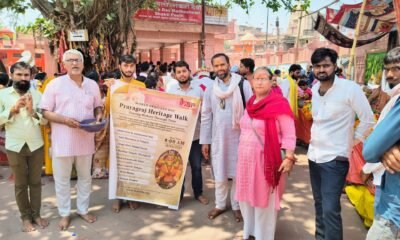
 Events7 months ago
Events7 months agoIHAR – World Heritage Day – April 18th 2025 updates

